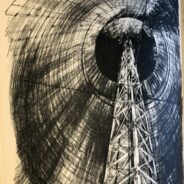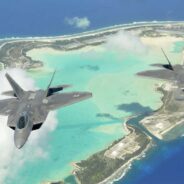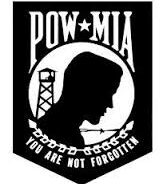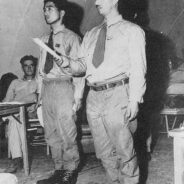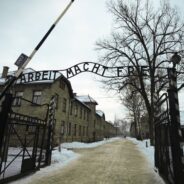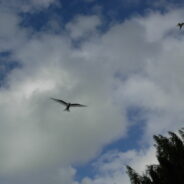Hiding on Wake
Among the memoirs penned by Wake survivors is one written by Logan “Scotty” Kay in 1971 titled “By the Dawn’s Early Light.” Kay and another civilian evaded capture on Wake Island for nearly three months, and it is interesting to compare the memoir with his actual diary, transcribed in WWII journalist George Weller’s book, First into Nagasaki: The Censored Eyewitness Dispatches on Post-Atomic Japan and its Prisoners of War, edited by Anthony Weller (Random House, 2006). With many differences in detail, I chose the diary to summarize the...
read moreRed Hill Shutdown
The recent water contamination crisis on Oahu has rung the death knell for the U. S. Navy’s 80-year-old Red Hill underground fuel storage system. Last week the Secretary of Defense, Lloyd Austin, announced plans to defuel and permanently close the system. Congress has approved $686 million for first steps: to cover costs of thousands of families sickened and displaced by the November 2021 contamination of drinking water on Joint Base Pearl Harbor Hickam, to empty the Red Hill tanks, and to provide remediation and environmental restoration....
read moreStrategic Importance
Six years ago, I wrote a blog post titled Ready, Aim, Fire about the successful ICBM defense test that had just taken place on and near Wake Island in November 2015. In this test a Terminal High Altitude Area Defense (THAAD) system stationed on Wake detected, intercepted, and downed a target missile launched from a C-17 over the Pacific. While other components of the layered defense system failed in that test, the success at Wake warranted publicity, given the provocative missile launches by North Korea in mid-decade. Since 2015 the Missile...
read moreUnburied Treasure
Uninhabited until the 1930s, tiny Wake Island had no claim to fame but for a shipwreck that caught the attention of national news media. One dark and stormy night in March 1866 a German sailing ship struck the eastern reef of the low-lying atoll. The shipwrecked Libelle, a stranded opera star, and hundreds of thousands of dollars-worth of buried treasure made for story-telling gold. When Pan American Airways sent a crew in 1935 to build a station for its new trans-Pacific clipper service, workers found scattered evidence of the wreck on the...
read moreA Wreath for POWs
The nationwide “Wreaths Across America” remembrance ceremony was held this year on December 14, 2019, at more than two thousand cemeteries across the nation and more internationally. Family members, dignitaries, service members, and volunteers join at regional veterans’ cemeteries to honor those who served our nation and to lay evergreen wreaths on each grave. The solemn ceremony opened at noon on Saturday at the Washington State Veterans Cemetery in Eastern Washington with the presentation of eight ceremonial wreaths, including the wreath...
read moreVictors’ Justice
Several years ago I wrote about the trial of Rear Admiral Shigematsu Sakaibara for the execution of the 98 American civilian POWs on Wake Island during World War II (see War Crime). In recent months I’ve been digging deeper into trial records and contacting government agencies to help the Forsberg family find a material item used as evidence in the Sakaibara trial. My research has revealed some interesting new (to me) material on the Wake story and offers a new perspective on the Asia-Pacific war crimes trials themselves. The Sakaibara trial,...
read moreThe Underside of Genocide
The massacre of the last 98 Americans on Wake Island in 1943 did not constitute genocide, but I wonder where the line is crossed between war crimes committed against civilians and acts of genocide committed against civilians. I recently gave a talk on genocide and dictatorship and during my research found that crimes against humanity, war crimes, and genocide do not have clear lines of separation, even in international law. The concept of genocide arose with the unprecedented horror of Holocaust in WWII. Raphael Lemkin, a Polish Jew, coined...
read moreRIP, Wake 98
It’s been a year and a half since I posted about the Wake 98 and the JPAC/DPAA mission to identify a group of remains found on the island in 2011. I wish I had some news to share, but I don’t. I maintained close contact with authorities at JPAC and the lab at Dover AFB over the years as we found DNA donors for over 70 of the 98 massacre victims, but as my search came to an end, my connections dwindled and I have had no response to inquiries over the past year. As far as I know there have been no positive identifications of the remains, but...
read moreRoll on, Columbia
The mighty Columbia River flows 1,200 miles from its source in British Columbia to its terminus at the Pacific Ocean. The river’s strength lies in its volume and rapid descent, fed by countless tributaries and falling 2,600 feet along its course. Humans have drawn on its vast resources for at least twelve thousand years. White settlement and rapid regional development in the nineteenth and twentieth centuries drastically altered the Columbia’s traditional role and uses. In the last century more than sixty hydroelectric dams have been built in...
read moreWomen of Wake
A few weeks ago my good friend and Wake Brother, Floyd Forsberg, sent me a large box containing hundreds of photocopies of Wake-related records that his mother had saved during World War II. Ruth Forsberg was an officer in the Los Angeles-area wartime organization, “Women of Wake,” and retained the group’s minutes, correspondence, and other documents. Recently Floyd took on the daunting effort of organizing and photocopying the records and I am grateful to him for sharing the fruits of his long Montana winter project with me. It must have...
read more

